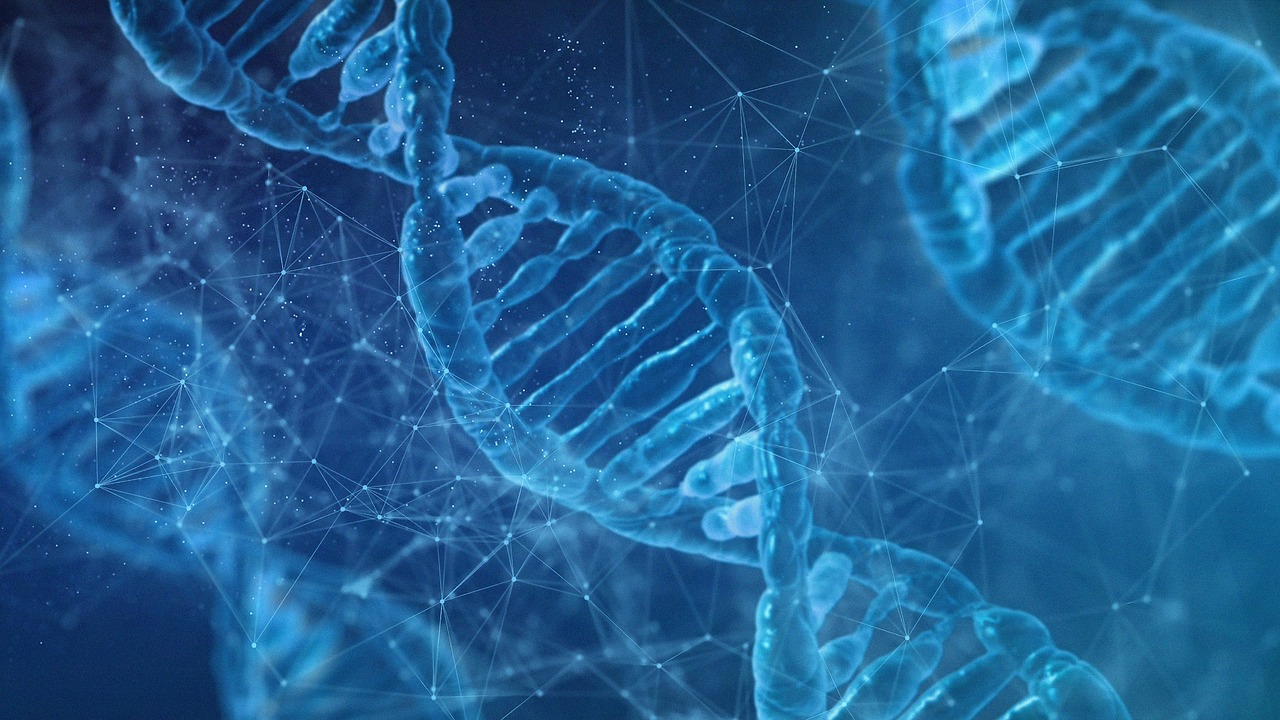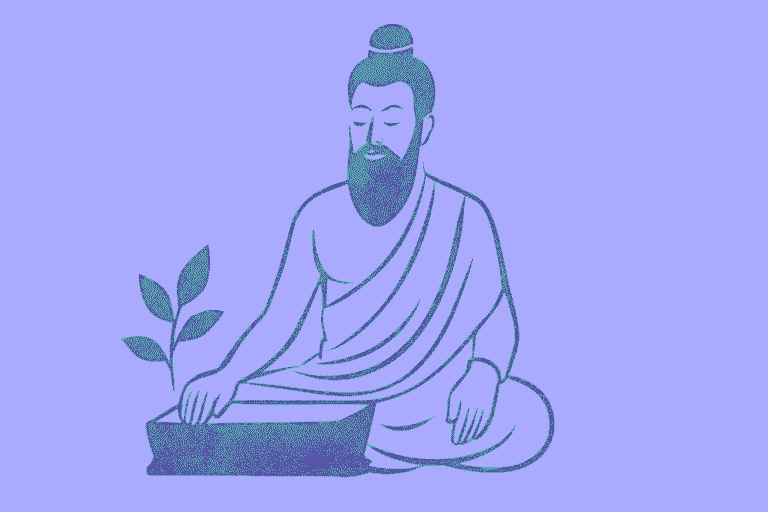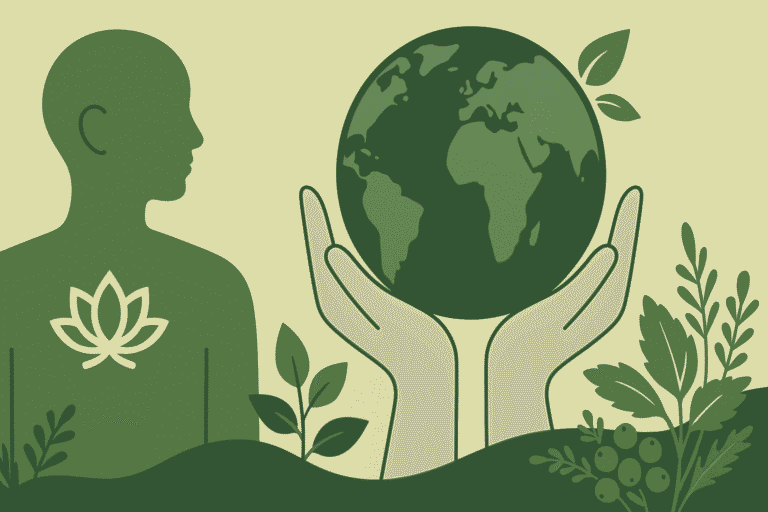contact@cayeit.com
Bombshell Dropped by the Scientists:
In a shocking revelation that’s rocking the scientific world, researchers have uncovered a terrifying truth: the male-defining Y chromosome is disappearing at an alarming rate! This genetic time bomb threatens to turn men into an endangered species within a mere 4.6 million years. Are we witnessing the beginning of the end for masculinity as we know it? The clock is ticking, and the future of humanity hangs in the balance! Let’s explore the whole mystery.
The human genome, a complex tapestry of genetic information, has long fascinated scientists and researchers. Among the 23 pairs of chromosomes that define our genetic makeup, the Y chromosome stands out as a unique entity, playing a crucial role in determining male characteristics. However, recent scientific discoveries have unveiled a startling phenomenon: the gradual loss of the Y chromosome in human populations. This revelation has sent shockwaves through the scientific community and raised concerns about the future of male fertility and overall health. In this comprehensive exploration, we’ll dive deep into the reasons behind this genetic erosion, its potential impacts on human biology, and how the ancient wisdom of Ayurveda might offer solutions to this modern dilemma.
The Y chromosome, often referred to as the male chromosome, is a vital component of male biology. It carries genes responsible for male sexual development, sperm production, and other male-specific traits. Unlike other chromosomes that come in pairs, the Y chromosome stands alone, making it particularly vulnerable to genetic changes and mutations. This vulnerability has led to a gradual shrinkage of the Y chromosome over millions of years of evolution, a process that appears to be accelerating in recent times.
To understand the gravity of this situation, let’s look at some key statistics:
- The Y chromosome has lost nearly 95% of its original genes over the past 300 million years.
- Recent studies suggest that the rate of Y chromosome loss is increasing in certain populations.
- Some estimates predict that the Y chromosome could disappear entirely within the next 4.6 million years if the current trend continues.
These numbers paint a concerning picture for the future of male genetics and reproduction. However, before we delve into the potential consequences and solutions, it’s crucial to understand the underlying reasons for this genetic phenomenon.
Why is the Y Chromosome Disappearing?
The gradual disappearance of the Y chromosome is a complex phenomenon that intertwines ancient biological processes with modern environmental and lifestyle factors. While this issue may seem purely in the realm of modern genetics, Ayurveda, with its holistic approach to health and balance, offers unique insights and potential solutions to this genetic conundrum. Let’s explore the primary reasons behind this genetic erosion through both a scientific and Ayurvedic lens:
1. Evolutionary Pressure and Genetic Drift: The Imbalance of Doshas
The Y chromosome’s unique structure makes it more susceptible to evolutionary changes. Unlike other chromosomes that can swap genetic material during cell division (a process called recombination), the Y chromosome largely remains isolated. This isolation means that harmful mutations can accumulate over time without being repaired through genetic mixing. As a result, natural selection tends to favor Y chromosomes with fewer genes, leading to a gradual reduction in size and genetic content.
In Ayurveda, this phenomenon can be viewed through the view of doshic imbalance. The three doshas represent the fundamental force that governs all physiological and psychological processes. The Y chromosome’s vulnerability aligns with an excess of Vata dosha, which governs movement and change. This Vata imbalance leads to instability and degeneration at the genetic level.
Recent research in epigenetics supports the Ayurvedic view that lifestyle factors can influence genetic expression. A study published in the journal Nature Communications (2019) demonstrated that stress-reduction techniques, akin to Ayurvedic practices for balancing Vata, can positively affect gene expression. Therefore, by incorporating Vata-pacifying practices such as meditation, oil massage (Abhyanga), and consumption of grounding foods, we may create an environment more conducive to genetic stability.
2. Environmental Factors and Lifestyle Choices: Agni and Ama Accumulation
Modern lifestyles and environmental pollutants play a significant role in accelerating Y chromosome loss. Exposure to endocrine-disrupting chemicals, such as those found in certain plastics and pesticides, can interfere with the normal functioning of sex hormones and potentially damage the Y chromosome. Additionally, factors like smoking, excessive alcohol consumption, and obesity have been linked to increased rates of Y chromosome loss in some studies.
Ayurveda conceptualizes these environmental and lifestyle factors as influences on Agni (digestive & metabolic fire) and the accumulation of Ama (toxins). When Agni is weakened by poor lifestyle choices, it leads to the buildup of Ama, which can disrupt cellular function and genetic integrity.
Recent research supports the Ayurvedic concept of detoxification. A study in the Journal of Alternative and Complementary Medicine (2018) found that Panchakarma significantly reduced levels of toxins in the body. By incorporating Ayurvedic detoxification practices and using herbs like Triphala, which has been shown to have powerful antioxidant properties in a study published in the Journal of Ethnopharmacology (2015), scientists may be able to mitigate the impact of environmental factors on Y chromosome health.
3. Age-Related Degeneration: Balancing Vata in Aging
As men age, their cells are more likely to lose the Y chromosome through a process called mosaicism. This means that some cells in the body may lack the Y chromosome entirely, while others retain it. The rate of this age-related loss varies among individuals and can be influenced by genetic predisposition and lifestyle factors.
In Ayurveda, aging is associated with an increase in Vata dosha, which can lead to degeneration and loss of cellular integrity. This aligns with the scientific observation of age-related Y chromosome loss.
Recent scientific studies have begun to validate Ayurvedic anti-aging approaches. Research published in Oxidative Medicine and Cellular Longevity (2017) showed that Rasayana herbs like Ashwagandha (Withania somnifera) possess potent antioxidant properties and can protect against cellular aging. By incorporating Vata-pacifying practices and Rasayana therapies, we may be able to slow the age-related loss of the Y chromosome.
4. Genetic Bottlenecks and Population Dynamics: Preserving Ojas
Historical events that led to significant population reductions, such as wars or natural disasters, can create genetic bottlenecks. These events can accelerate the loss of genetic diversity, including variations in the Y chromosome. In smaller populations, genetic drift can have a more pronounced effect, potentially leading to the loss of certain Y chromosome variants.
Ayurveda recognizes the concept of Ojas, the vital essence that represents the body’s immunity and overall vitality. The loss of genetic diversity can be seen as a depletion of collective Ojas within a population.
While the concept of Ojas doesn’t have a direct scientific equivalent, research in population genetics supports the importance of genetic diversity for population health. A study in Nature Reviews Genetics (2020) highlighted the importance of maintaining genetic diversity for long-term population viability. Ayurvedic practices that build Ojas, such as the use of adaptogenic herbs, may contribute to overall population health and resilience.
5. Reproductive Technologies and Social Changes: Balancing Progress with Tradition
Scientific Perspective:
The advent of assisted reproductive technologies has allowed men with low sperm counts or other fertility issues to father children. While this is a positive development for many families, it may inadvertently reduce the selective pressure against Y chromosome mutations that affect fertility. Additionally, changing social norms around family size and delayed parenthood could influence the transmission and preservation of Y chromosome variants in the population.
Ayurveda emphasizes the importance of Shukra dhatu (reproductive tissue) in overall health and genetic continuity. The use of reproductive technologies and changing social norms can be seen as potential disruptions to the natural balance of this vital tissue. While Ayurveda recognizes the value of these advancements, it also stresses the importance of maintaining balance and supporting natural reproductive health.
Recent scientific studies have begun to validate traditional Ayurvedic approaches to male reproductive health. A systematic review published in Andrologia (2018) found that several herbs used in Ayurvedic Vajikarana therapy, such as Safed Musli (Chlorophytum borivilianum) and Kapikacchu (Mucuna pruriens), showed promising results in improving sperm quality and male reproductive function.
The disappearance of the Y chromosome is a complex issue that requires a multifaceted approach. By integrating Ayurvedic wisdom with modern scientific understanding, we open up new avenues for addressing this genetic challenge. The alignment between Ayurvedic concepts like dosha balance, Agni, and Ojas with scientific observations on genetic stability, cellular health, and population dynamics is striking.
Ayurvedic future approach for Y Chromosome Preservation and Potential Reversal Strategies
Ayurveda emphasizes the equilibrium of the body’s internal energies (Doshas) along with the critical roles of diet, lifestyle, and environment in maintaining overall health. Although the texts do not specifically mention the Y chromosome, they encapsulate principles that resonate with modern understandings of genetic preservation, epigenetics, and cellular longevity. These Ayurvedic principles can provide insights into strategies for safeguarding the Y chromosome, which is facing attrition over generations due to genetic degradation. Below, we explore Ayurvedic concepts that align with the preservation and potential reversal of Y chromosome degeneration, providing clues for future scientific exploration.
1. Balancing Vata: Addressing Genetic Instability Through Ayurvedic Doshic Perspectives
In Ayurveda, the concept of doshic imbalance plays a central role in understanding health and disease. The three doshas-Vata, Pitta, and Kapha, are fundamental energies that govern all physiological and psychological functions in the human body. Among these, Vata is responsible for movement, transformation, and regulation of all forms of dynamic activity within the body, including cellular functions and genetic processes. The vulnerability of the Y chromosome, characterized by instability and a tendency toward degeneration, aligns closely with an excess of Vata dosha. This perspective provides a novel lens through which the degradation of the Y chromosome can be understood and potentially counteracted.
Vata dosha, composed of the elements air (Vayu) and ether (Akasha), embodies the qualities of dryness, lightness, coldness, and irregularity. When Vata is in balance, it governs proper cellular communication, DNA replication, and overall genetic stability. However, when Vata becomes aggravated or excessive, it leads to irregularity, instability, and degradation at the genetic level. The process of chromosomal degeneration, particularly of the Y chromosome, mirrors the pathological states induced by high Vata- increased cellular division errors, compromised DNA repair mechanisms, and heightened vulnerability to oxidative damage.
Excessive Vata is associated with increased oxidative stress, rapid metabolic turnover, and disrupted cellular communication-all factors that can precipitate genetic instability. This mirrors scientific findings where high oxidative stress and erratic cellular functions are significant contributors to DNA damage, telomere shortening, and chromosomal aberrations, including those affecting the Y chromosome.
Ayurvedic interventions provide a holistic approach to maintaining genetic stability. Balancing Vata through diet, lifestyle, and herbal support may serve as a complementary strategy for mitigating chromosomal degradation, paving the way for innovative research into ancient wisdom’s role in modern genetic preservation.
Future research could explore the biochemical and molecular parallels between Vata aggravation and chromosomal degradation. Specific areas of interest include:
i. Oxidative Stress Modulation: Investigating the impact of Vata-pacifying herbs on oxidative stress biomarkers and their role in DNA repair, particularly in the context of Y chromosome preservation.
ii. Gene Expression Studies: Exploring how Vata-modulating dietary and lifestyle interventions influence gene expression related to DNA stability, telomere maintenance, and chromosomal protection.
iii. Chromosomal Cohesion Analysis: Assessing the effects of Vata balancing on chromosomal cohesion proteins and their role in maintaining Y chromosome integrity.
2. Rasayana Therapy: Cellular Rejuvenation and Genetic Integrity
Rasayana is an Ayurvedic branch which is dedicated to rejuvenation, longevity, and vitality. It is one of the most promising areas when it comes to cellular and genetic preservation. This therapy involves the use of specific medicinal herbs, dietary regimens, and lifestyle modifications to promote overall health, enhance immune functions, and protect genetic material.
Rasayana herbs (herbal geno-protective agents), such as Ashwagandha (Withania somnifera), Amla (Emblica officinalis), and Guduchi (Tinospora cordifolia), are renowned for their potent antioxidant, anti-inflammatory, and genoprotective properties. Scientific research has shown these herbs can modulate gene expression, enhance DNA repair pathways, and reduce oxidative stress—all factors critical to maintaining genetic stability.
These herbs function by scavenging reactive oxygen species (ROS), which are harmful byproducts of cellular metabolism that cause DNA mutations and chromosomal degradation. By reducing ROS levels, Rasayana herbs help protect against DNA strand breaks, point mutations, and chromosomal losses, including those affecting the Y chromosome.
Investigations could focus on the specific molecular pathways through which these herbs influence chromosomal stability, including their effects on DNA repair enzymes, telomere maintenance, and chromosomal end-protection complexes. This research could reveal potential therapeutic strategies for slowing or reversing the degradation of the Y chromosome.
3. Shukra Dhatu Nourishment: Enhancing Reproductive and Genetic Health
In Ayurveda, Shukra Dhatu is considered the essence of all body tissues and is closely linked to reproductive health, vitality, and genetic quality. Nourishment of Shukra Dhatu is believed to enhance not only reproductive capabilities but also the quality of genetic material passed on through generations.
The Ayurvedic concept of Shukra Dhatu closely mirrors modern scientific concerns regarding sperm DNA integrity and its direct implications for Y chromosome preservation. Ayurvedic herbs like Shatavari (Asparagus racemosus) and Kapikacchu (Mucuna pruriens) have been scientifically shown to improve sperm quality, increase motility, and protect against oxidative DNA damage.
These herbs exert their protective effects by boosting antioxidant defences, modulating hormone levels, and enhancing the overall energy metabolism of reproductive tissues. They help maintain sperm DNA integrity by reducing oxidative stress and inflammation, which are known contributors to Y chromosome instability.
Research could explore the specific effects of these herbs on Y chromosome stability, focusing on their influence on sperm chromatin packaging, protamine-histone balance, and protection against DNA fragmentation. Understanding these effects could guide interventions aimed at preserving genetic integrity in male reproductive cells.
4. Epigenetic Modulation: Diet (nutrigenomics) and Lifestyle Influences
Ayurveda’s emphasis on personalized diet and lifestyle choices is closely aligned with the modern field of epigenetics, which examines how environmental factors can modify gene expression without altering the DNA sequence itself. These modifications can significantly impact genetic stability and chromosomal integrity.
Ayurvedic principles advocate for a balanced (Sattvic) lifestyle, characterized by a diet rich in whole foods, mindful living, and a focus on mental and physical harmony. These practices have been shown to positively influence gene expression, enhance DNA repair mechanisms, and reduce the accumulation of genetic errors.
Ayurvedic dietary and lifestyle practices can influence key epigenetic markers such as DNA methylation and histone modification, which regulate gene expression and chromosomal stability. By maintaining optimal epigenetic patterns, these practices may help protect the Y chromosome from degradation linked to environmental stressors, poor diet, and lifestyle-induced genetic instability.
Future studies could focus on the effects of specific Ayurvedic diets and lifestyle modifications on the epigenetic landscape of reproductive tissues, particularly in the context of Y chromosome health. Research could investigate the impact of Sattvic living on epigenetic markers that govern chromosomal maintenance, potentially identifying novel lifestyle interventions for genetic preservation.
5. The Role of Adaptogens in Genetic Preservation
Adaptogens, a unique class of herbs in Ayurveda, enhance the body’s ability to resist physical, chemical, and biological stressors, thereby contributing to overall resilience and genetic stability. Herbs such as Ashwagandha, is well-documented for their ability to modulate cellular stress responses, including those relevant to genetic preservation.
Adaptogens influence key cellular pathways that protect DNA from damage, including the activation of heat shock proteins (HSPs) and antioxidant enzymes. These pathways play critical roles in stabilizing chromosomal structures and protecting genetic material from environmental insults.
Adaptogens enhance the cellular defence mechanisms against stress-induced damage, thereby mitigating genetic instability and chromosomal degradation. They promote the stabilization of telomeres, enhance DNA repair processes, and reduce stress-induced chromosomal aberrations, including those affecting the Y chromosome.
Future research should explore the specific molecular targets of adaptogens related to Y chromosome stability, such as their effects on telomerase activity, chromosomal cohesion, and the maintenance of chromosomal end structures. These studies could offer insights into the development of adaptogen-based interventions for genetic preservation.
Concluding remarks: The preservation of the Y chromosome is a multifaceted challenge that requires innovative approaches. Ayurvedic principles, with their deep understanding of human physiology, diet, and lifestyle, offer a promising complementary perspective. By exploring the molecular underpinnings of Ayurvedic therapies and their alignment with genetic and epigenetic stability, future research can unlock new strategies for preserving and potentially reversing Y chromosome attrition. This fusion of ancient wisdom and modern science holds the potential to create groundbreaking pathways in the field of genetic preservation.
It’s important to note that while these Ayurvedic practices show promise in supporting overall health, they should be considered as part of a comprehensive approach to well-being. As research in this field continues to evolve, we may gain even deeper insights into how Ayurveda wisdom can complement modern genetic health strategies.





